Economy

U.S. Manufacturing Indicators Remain Strong
Written by Peter Wright
September 5, 2018
Economic indicators of manufacturing activity continue to look favorable for the rest of 2018. This report summarizes nine data sources that describe the state of manufacturing in the United States. We have reported on most of these separately in our Steel Market Update publications, and therefore will be brief in this summary. We don’t expect these data sources to all point in the same direction. Our intent in summarizing them in one document is to provide a consensus of the state of this critical steel consuming sector. Based on American Iron and Steel Institute estimates of steel mill shipments by market classification, almost 50 percent of the steel consumed in the U.S. is manufacturing-oriented. This breaks down to about 27 percent in ground transportation, 9 percent in machinery and equipment, 5 percent in appliances, 4 percent in defense and about 4 percent in containers.
The Industrial Production Index
Figure 1 shows the IP index since January 2007 with the year-over-year growth. The three-month moving average (3MMA) of the year/year growth is shown by the brown bars in Figure 1. March 2017 was the first month of positive growth in the 3MMA since April 2015. Growth has been consistently in the mid 3 percent range in the five months through July 2018. Manufacturing capacity utilization improved from 74.48 percent in January last year to 75.60 in July 2018, also on a 3MMA basis.
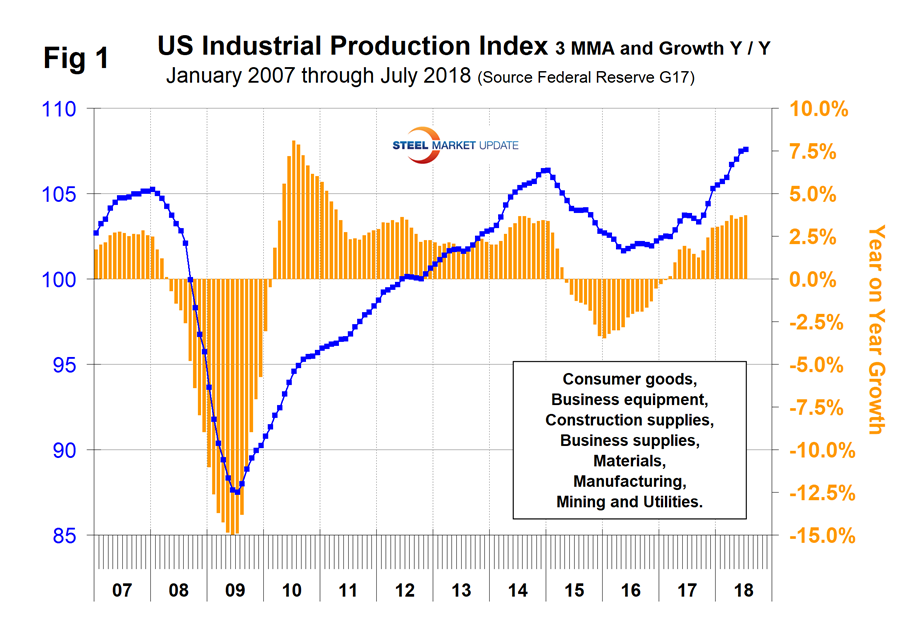
U.S. factory orders reported by the Census Bureau have been steadily increasing since mid-2016. In June, year-over-year growth was 5.4 percent.
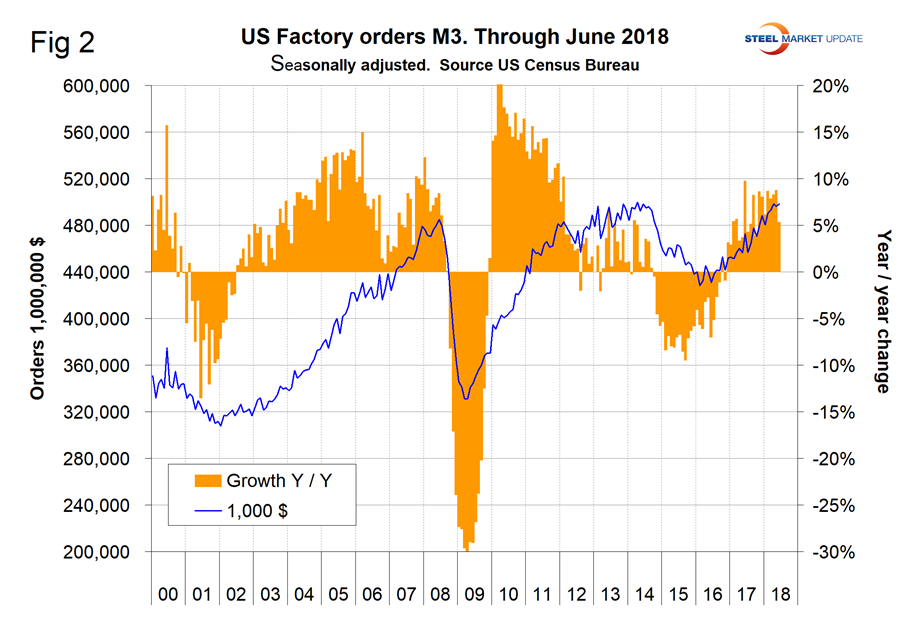
Within the Census Bureau M3 manufacturing survey is a subsection for new orders for Iron and Steel products. Figure 3 shows the history since January 2000 with an excellent growth rate of 15.9 percent year over year for June. Data at this level of detail is one month behind the advance report that covers total U.S. factory orders.
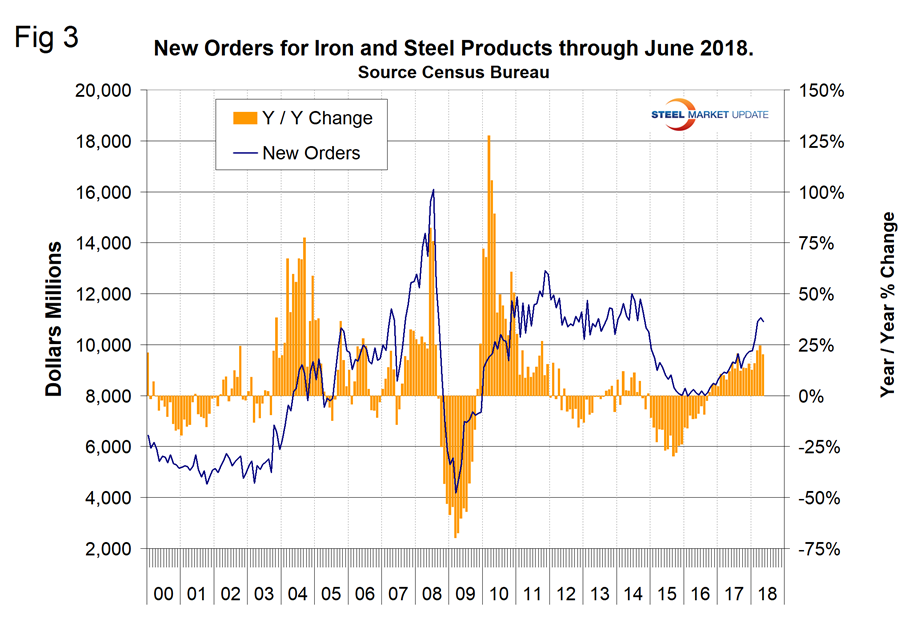
New Orders for Durable Goods (Advance Report)
The U.S. Census Bureau announced last week that new orders for manufactured durable goods in July decreased by 0.4 percent on a 3MMA basis month over month, but were up by 5.9 percent year over year. Figure 4 shows the 3MMA of monthly orders for durable goods since January 2010 and that the recent change year over year has been the highest since 2014.
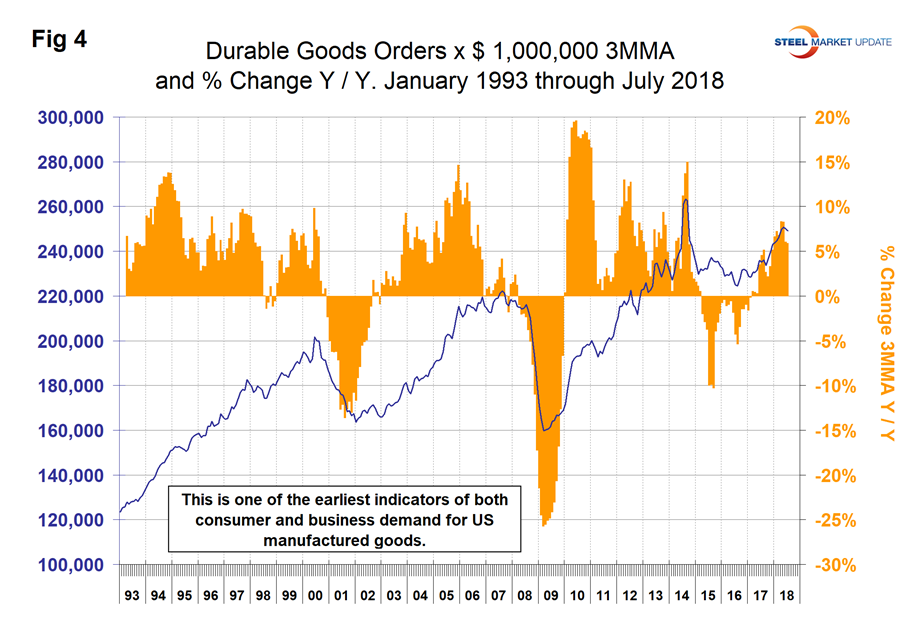
The Durable Goods Portion of GDP
The second estimate of Q2 2018 GDP came in at 4.2 percent annualized growth, which was up from 2.2 percent in Q1 2018. A subcomponent of the quarterly data is durable goods, which is part of the personal consumption calculation. It therefore contains no military hardware or civil aircraft data. This is shown in Figure 5 and, presumably because of the exclusions just mentioned, looks nothing like the blue line in Figure 4. The durable goods portion of GDP declined in Q1 2018, but the long-term trend is still very positive.
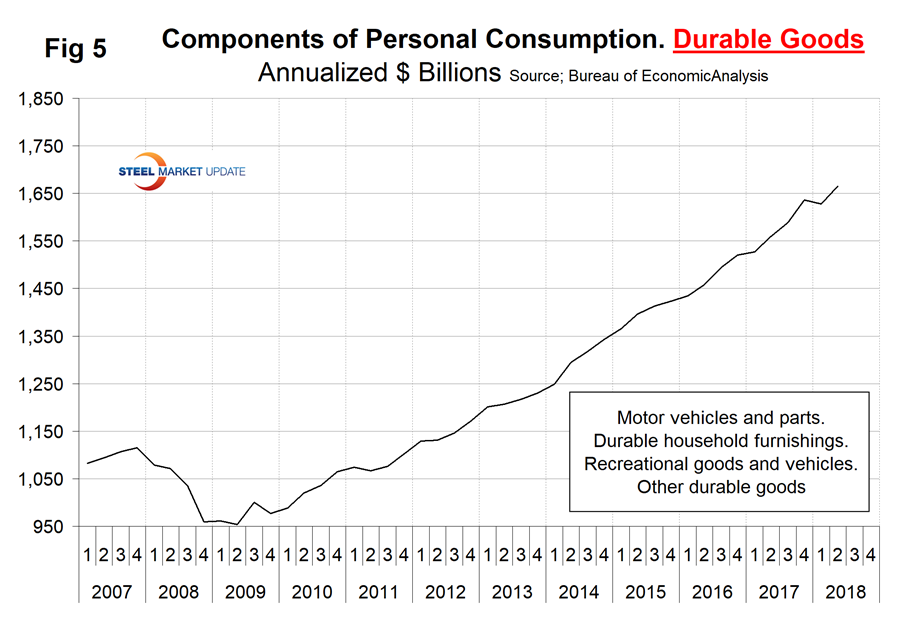
Light Vehicle Production in NAFTA
Our past reports have included auto assembly data for the U.S., Canada and Mexico, but that source has dried up, so until we find a replacement we are reporting on U.S. auto sales. Another complication is that effective April 2018, GM no longer reports their sales results. Automobile sales have trended down slightly in the last 2½ years and in July were exactly the same as in July last year at 16.8 million units annualized. Sales are still higher than the pre-recession level, but only just (Figure 6). Consumer preference for light trucks, which includes SUVs and crossovers, is still increasing. Import market share in July was 23.2 percent and has been drifting up since March last year.
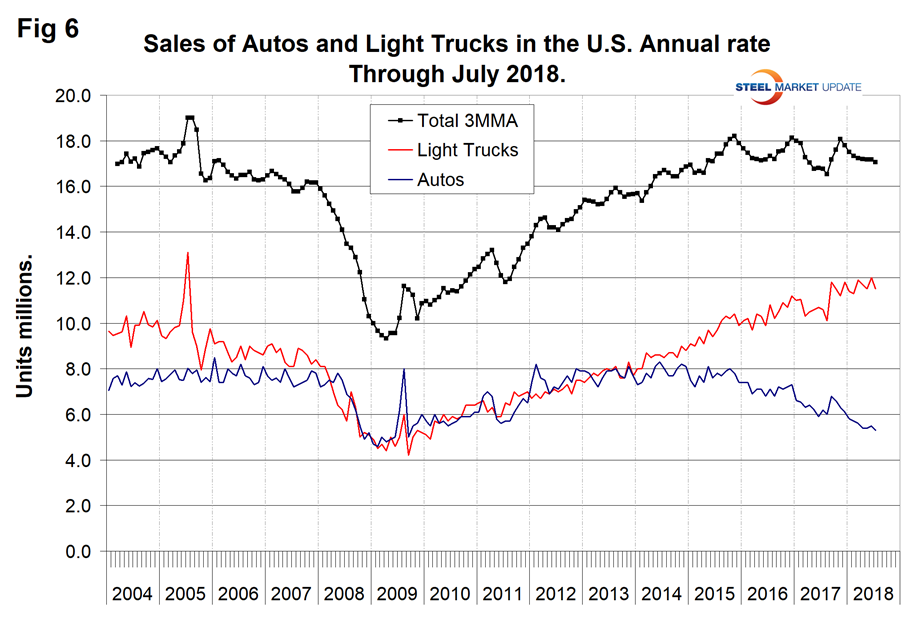
Manufacturing Employment
Manufacturing employment plummeted during the recession and gradually improved from the spring of 2010 through 2014. Growth was flat in 2015 and declined slightly in 2016 when 23,000 jobs were lost during the year as a whole. There was a turnaround in 2017, and in the 12 months August 2017 through July 2018, 327,000 jobs were created in manufacturing (Figure 7). The motor vehicles and parts subcomponent of manufacturing employment had a net gain of only 41,000 in the same time frame.
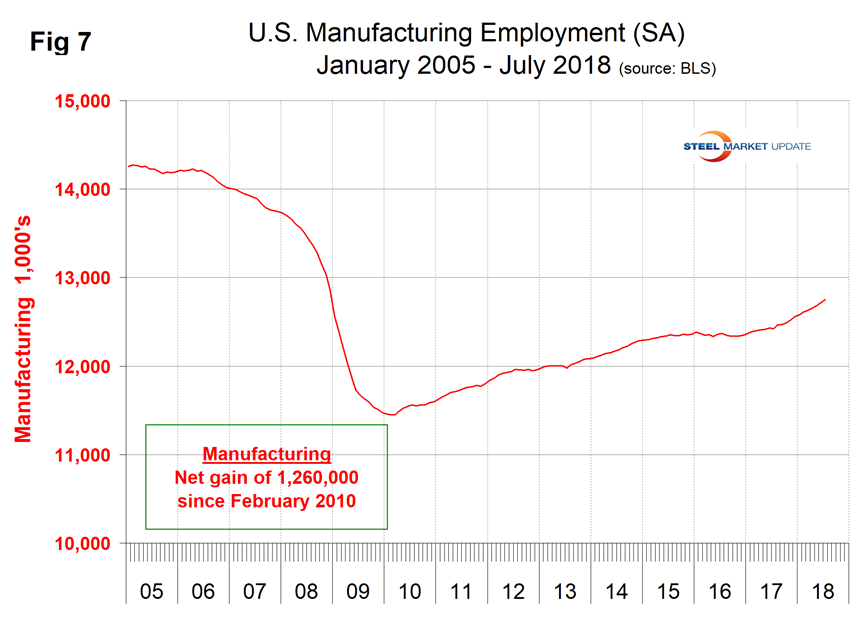
Manufacturing Productivity
The Bureau of Labor Statistics reported that in Q2 2018 manufacturing productivity declined by 0.2 percent year over year (Figure 8). Since the third quarter of 2011, manufacturing productivity has had a net contraction of 0.6 percent, according to the BLS.
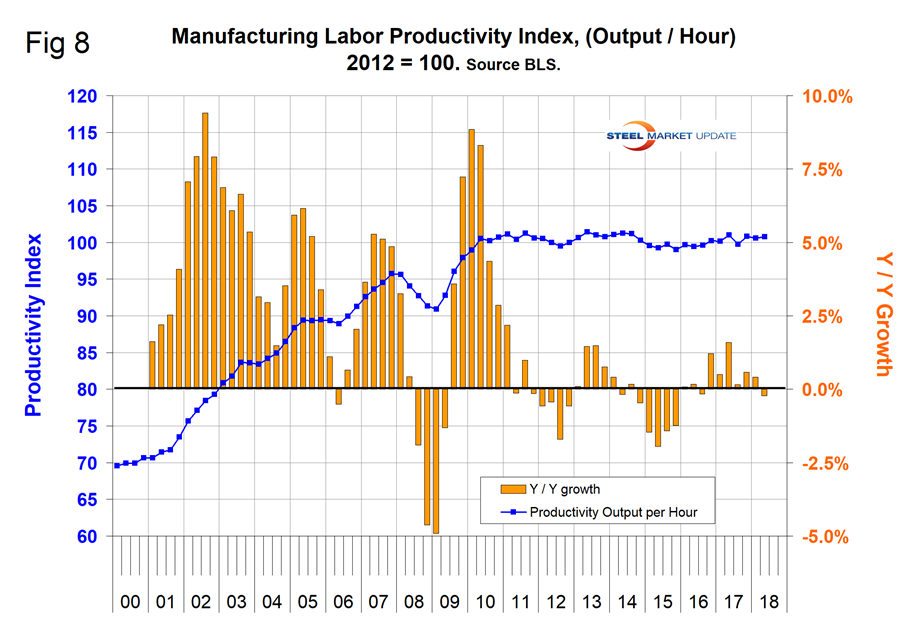
The ISM Manufacturing Index
The Institute for Supply Management’s Manufacturing Index is a diffusion index. ISM states: “Diffusion indexes have the properties of leading indicators and are convenient summary measures showing the prevailing direction of change and the scope of change. An index value above 50 percent indicates that the manufacturing economy is generally expanding; below 50 percent indicates the opposite.” Figure 9 shows the 3MMA of the ISM index from January 1997 through August 2018 with an improving trend since January 2016. In August, the 3MMA of the index at 59.87 was the highest since April 2011.
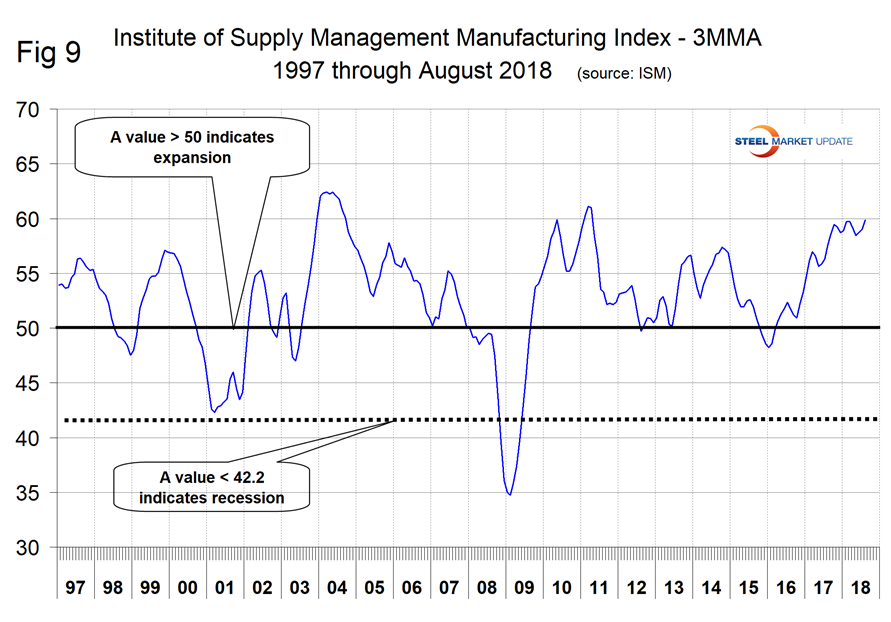
SMU Comment: Manufacturing activity is strong. Figure 10 shows a map of the nine indicators that we are currently tracking. The weakest of these is the performance of manufacturing labor productivity, which we find surprising considering all we read about AI and automation.
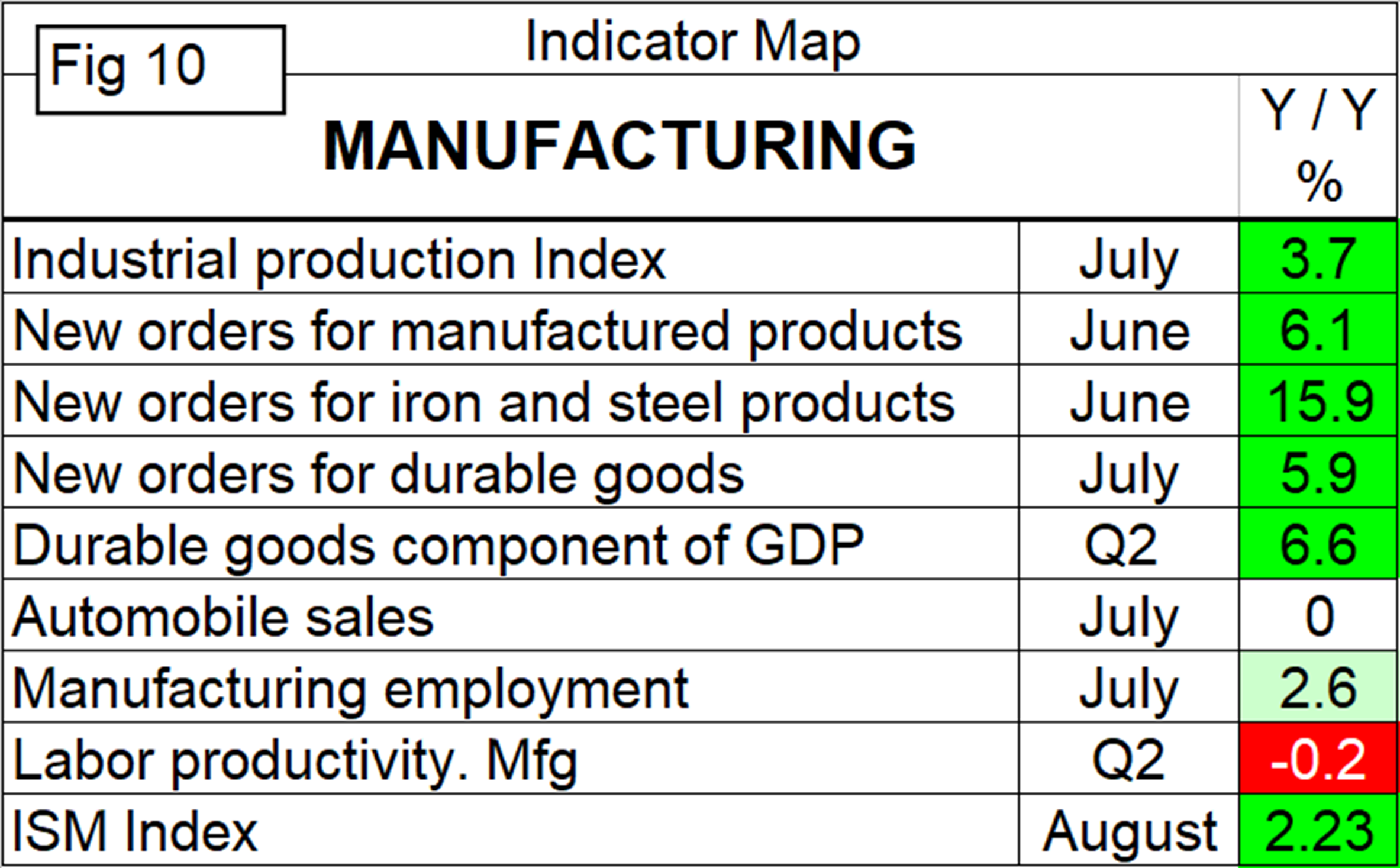

Peter Wright
Read more from Peter WrightLatest in Economy

Industry groups praise Senate for passing tax and budget bill
The Steel Manufacturers Association and the American Iron and Steel Institute applauded the tax provisions included in the Senate's tax and budget reconciliation bill.

Chicago PMI dips 0.1 points in June
The Chicago Purchasing Managers Index (PMI) slipped 0.1 points to 40.4 points, in June.

Multi-family pullback drives housing starts to 5-year low in May
US housing starts tumbled in May to a five-year low, according to figures recently released by the US Census Bureau.

Architecture firms still struggling, ABI data shows
Architecture firms reported a modest improvement in billings through May, yet business conditions remained soft, according to the latest Architecture Billings Index (ABI) release from the American Institute of Architects (AIA) and Deltek.

Manufacturing in New York state contracts again
However, companies are growing more optimistic about the future.
